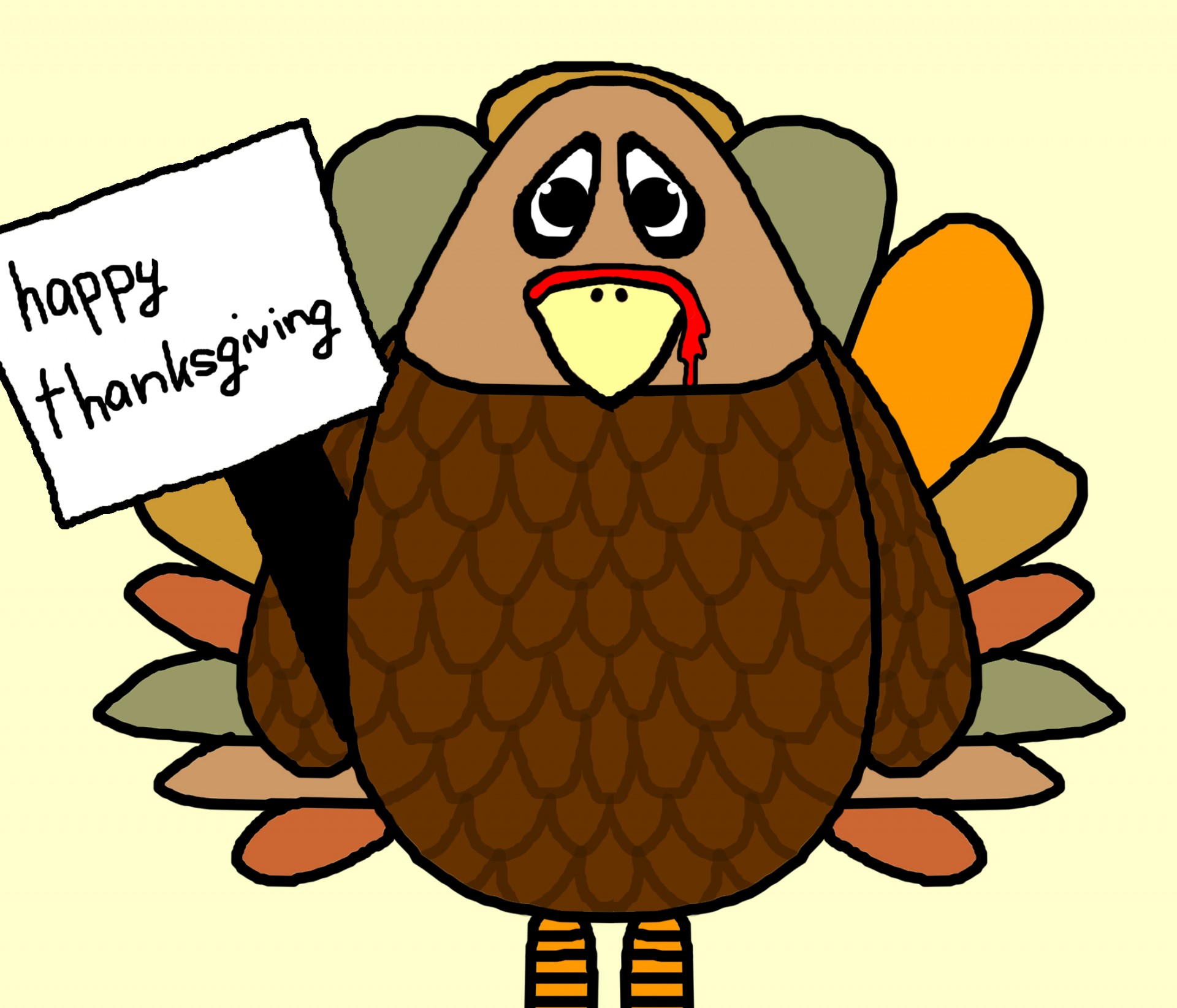 The pilgrims landed at Plymouth Rock at the end of 1620; by the fall of 1621, almost half of the 102 people who came over on the Mayflower had died, starvation being a major cause. In 1621 the harvest was good, so the surviving pilgrims celebrated by feasting with Wampanoag Indians who had been so helpful in the first year at Plymouth. The exact date of the feast is unknown, but it happened sometime between September 21 and November 11 – the first Thanksgiving.
The pilgrims landed at Plymouth Rock at the end of 1620; by the fall of 1621, almost half of the 102 people who came over on the Mayflower had died, starvation being a major cause. In 1621 the harvest was good, so the surviving pilgrims celebrated by feasting with Wampanoag Indians who had been so helpful in the first year at Plymouth. The exact date of the feast is unknown, but it happened sometime between September 21 and November 11 – the first Thanksgiving.
We don’t really know if the pilgrims and Indians ate Thanksgiving turkey, so how did the turkey become the symbol of the holiday? It seems the pilgrims called all wild fowl “turkey.” Governor William Bradford of the Plymouth colony sent men out to come back with fowl for the women to cook. We don’t know what it was but they called it turkey, and roasted the birds for dinner. The Navajo first encountered the turkey as a pest, shooing it away from their crops. Only later did they decide that fencing them in instead of out would provide more food.
No one knows where the word “turkey” came from, but it might have been Columbus who called it “tuka” or “tukki.”The Spaniards brought the Wild Turkey home from North America and it eventually became popular all over Europe, being variously called “turkey-fowl”, “turkey bird”, “turkey cock”, and even “Indian Fowl” because it was thought to come from the West Indies. So when the colonists were introduced to the bird by Native Americans, they were surprised to see a familiar bird as it had been raised in England for many generations by this time.
As pioneers moved westward and cleared the forests, the habitat for turkeys diminished. Because they are poor fliers, they were easily hunted and marketed for human consumption. In the late 1700’s, hen turkeys brought six cents to the hunter while the males fetched a quarter. By the mid-1800’s, the Civil War era, saw the extirpation of the turkey from almost half of its original range. By the early 1900’s only around 30,000 turkeys remained in the wild. After the turn of the century, when it became clear that all birds needed some protection against unregulated killing, the decline of the turkey population halted and over the last century protective measures and reintroductions have brought the population up to about 4.5 million across all states except Alaska.
Turkeys are now raised in open pens or environmentally controlled barns, and have been bred to have a higher protein level and bigger breast muscles than wild birds. They also have white feathers, to be more appealing to consumers as a lack of pigment leaves the skin pink and unblotched. Today the population of the U.S. eats nearly 300 million turkeys each year, 17 pounds per person and the number four source of protein, at a market value of almost eight billion dollars. Nearly 50 million of those turkeys are eaten at Thanksgiving.
Benjamin Franklin favored the turkey as our national symbol instead of the Bald Eagle. It may not have made our stamps and coins but it graces our tables nicely.
Pingback: Chickens – Ornithology